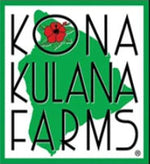February and March cover the Kona, Hawaii landscape with snow — Kona snow. White blossoms top green coffee trees and fill the air with sweet fragrance, looking like snowfall in the warm breezes of Hawaii. A magnificent time to visit the Big Island! But, this "snow" offers more than an amazing view. It holds the promise of a world-class cup of coffee.
The Life Cycle of Kona Coffee
Located on the Hualalai volcano's slopes, the Kona Coffee Belt covers only 30 miles of the Big Island’s coast and offers fertile soil for growing the world’s best coffee beans. This small growing area makes Kona snow coffee a rare but exquisite treat. Each sweet, white flower blooming in February and March transforms into a green cherry which ripens to a deep red over several months.
Kona coffee trees require fertilization, weed control and protection from the coffee cherry borer and other threats. The island’s afternoon rainfall offers the perfect drink and shade for growing these delicious beans, with irrigation necessary during dry seasons. Growers take expert care of this unique crop to give you the rich coffee that has made Kona so famous.
Harvested between August and January, the Kona coffee bean gets handpicked at peak ripeness. Each tree yields about 15 pounds of fruit — which converts to only two pounds of deliciously roasted coffee. But, a bean requires more care before it gets to your cup.
Time is of the essence. Coffee farmers must separate the beans from the pulp within 24 hours of harvest. They then enter the fermentation tank for 12 to 24 hours and are spread on a hoshidana or drying rack. Growers carefully watch for the beans to reach optimal moisture over the next seven to 14 days.
The dried beans or “parchment” gets milled and then roasted. The longer a bean roasts, the larger it grows. Therefore, the darker the color, the larger the coffee bean. Packaged and shipped fresh, you choose the perfect roast for your taste buds.
Then, the cycle begins again. Growers prune the trees to remove old branches and plant new seedlings to prepare for a fruitful harvest the following year and beyond. With diligent care, Kona coffee trees live to be 100 years old — promising exceptional coffee beans for generations to come.
The Perfect Cup of Kona Snow
Don't fall for the cheaper "Kona blend" coffee found in stores. For the perfect cup of coffee that originates from this Kona snow, make sure you only buy "100 percent Kona coffee." Nothing excites the tastebuds or transports you to the Big Island and trees topped with Kona snow in the same way.













